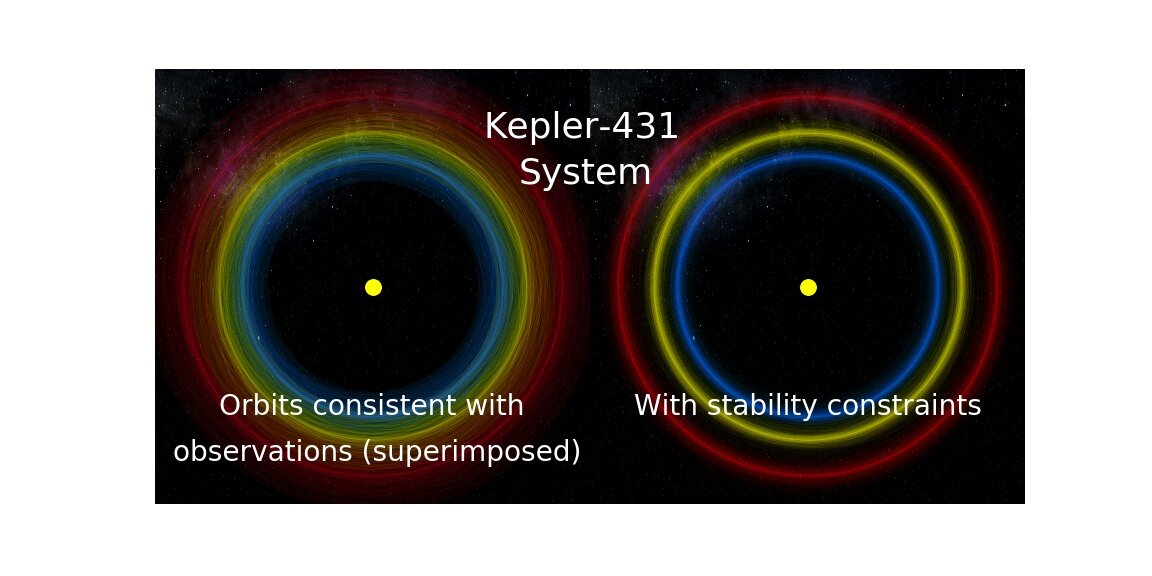The system was called SPOCK. Its task: to predict the orbits of exoplanets and determine which of them
For most multi-planet systems, there ismany possible orbital configurations, some of which can lead to collisions of bodies. Many of these development paths, possibly in a few million years, will turn the system into a ball of intersecting orbits. The aim of the study was to eliminate these so-called “quick instabilities”.
We cannot say for sure: this planetary system will explode soon. The goal of this AI is to eliminate all planets that have already survived the collision and do not currently exist.
Daniela Tamayo, NASA astrophysicist
 Possible ones are shown on the left.On the right are only those orbits that allow the system to exist until now (all unstable configurations have been removed). Performing this calculation using previous methods would have taken more than a year of computer time. The SPOCK model completed the job in 14 minutes. Image: Daniel Tamayo
Possible ones are shown on the left.On the right are only those orbits that allow the system to exist until now (all unstable configurations have been removed). Performing this calculation using previous methods would have taken more than a year of computer time. The SPOCK model completed the job in 14 minutes. Image: Daniel Tamayo
According to Tamayo, the new method will provide a clearer picture of the orbital architectures of planetary systems beyond our universe.
Read also:
In September, a dangerous asteroid will fly near the Earth. The minimum distance will be less than to the moon
Comet NEOWISE is visible in Russia. Where to see her, where to look and how to take a photo
Look at the huge “wall” of hundreds of thousands of galaxies behind the Milky Way